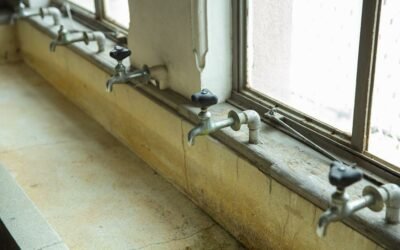Looking for ways to improve the air quality in your home? An air purifier might be just what you need. With its ability to reduce allergens, eliminate odors, and improve respiratory health, an air purifier offers several advantages.
However, it's important to consider the potential disadvantages as well, such as energy consumption and maintenance costs.
In this article, we will explore the advantages and disadvantages of using an air purifier to help you make an informed decision.
Key Takeaways
- Improved air quality and allergen removal
- Reduction of allergy symptoms
- Elimination of odors
- Improved respiratory health
Improved Air Quality
By using an air purifier, you can significantly improve the quality of the air in your home. Air purifiers work by removing pollutants and allergens from the air, creating a healthier and cleaner environment for you and your family. These devices are particularly beneficial for individuals with respiratory conditions, such as asthma or allergies, as they can help reduce symptoms and improve overall respiratory health.
One of the main advantages of air purifiers is their ability to remove airborne particles. These particles can include dust, pollen, pet dander, and even mold spores. By filtering out these pollutants, air purifiers can help alleviate symptoms such as sneezing, coughing, and itchy eyes. Additionally, air purifiers can also help eliminate odors from cooking, smoking, or pets, creating a fresher and more pleasant living space.
Moreover, air purifiers can be especially beneficial for individuals living in urban areas where air pollution is a concern. They can help reduce exposure to harmful pollutants such as particulate matter, volatile organic compounds (VOCs), and airborne bacteria. This can have a positive impact on respiratory health and may even reduce the risk of developing certain respiratory conditions in the long term.
Reduced Allergy Symptoms
Using an air purifier can significantly reduce your allergy symptoms. Allergies can be a real nuisance, causing symptoms such as sneezing, coughing, itching, and difficulty breathing.
Air purifiers work by removing allergens from the air, such as pollen, dust mites, pet dander, and mold spores. These particles can trigger allergic reactions and worsen symptoms in individuals who are sensitive to them. By capturing and trapping these allergens, air purifiers help to create a cleaner and healthier indoor environment, reducing the exposure to potential triggers.
Air purifiers with high-efficiency particulate air (HEPA) filters are particularly effective in reducing allergy symptoms. These filters can capture particles as small as 0.3 microns, which includes most allergens. HEPA filters can remove up to 99.97% of airborne allergens, providing relief for those suffering from allergies. Additionally, some air purifiers also feature activated carbon filters, which can help to remove odors and chemicals that may also trigger allergies.
It is important to note that while air purifiers can help to reduce allergy symptoms, they aren't a cure-all. Allergies are complex and can be caused by a variety of factors. It's important to identify and address the root cause of your allergies in order to effectively manage your symptoms.
However, incorporating an air purifier into your allergy management plan can be a beneficial step in creating a cleaner and more allergen-free environment.
Elimination of Odors
Can air purifiers effectively eliminate odors? Odors can be a nuisance in your home or office, and finding an effective solution is important. Air purifiers are designed to clean the air by removing pollutants, including odors. However, it's important to note that not all air purifiers are created equal when it comes to odor elimination.
Some air purifiers use activated carbon filters, which are effective at trapping and neutralizing odors. These filters contain millions of tiny pores that can absorb odor molecules, leaving the air smelling fresh and clean. Other air purifiers use ozone generators to eliminate odors. Ozone is a highly reactive molecule that can break down odor-causing particles, eliminating the smell.
To help you understand the effectiveness of air purifiers in eliminating odors, let's compare two popular models: Model A and Model B.
| Model A | Model B | |
|---|---|---|
| Odor Removal | Moderate | High |
| Filter Type | Activated Carbon | Ozone Generator |
| Coverage Area | 300 sq. ft. | 500 sq. ft. |
| Noise Level | Low | Moderate |
As you can see, Model B offers higher odor removal capabilities and a larger coverage area compared to Model A. It's important to consider these factors when choosing an air purifier for eliminating odors in your space.
Increased Respiratory Health
Improving your respiratory health is a significant advantage of using air purifiers. By filtering out harmful particles and allergens from the air, air purifiers can help alleviate respiratory issues and improve overall lung function. Here are three ways in which air purifiers can benefit your respiratory health:
- Removal of airborne pollutants: Air purifiers are designed to capture and remove common airborne pollutants such as dust, pollen, pet dander, and mold spores. These particles can trigger respiratory problems, especially in individuals with allergies or asthma. By removing these pollutants from the air, air purifiers can help reduce the frequency and severity of respiratory symptoms.
- Reduction of indoor air pollution: Indoor air can be more polluted than outdoor air, especially in areas with poor ventilation. Air purifiers can effectively remove pollutants such as volatile organic compounds (VOCs), smoke, and chemical fumes, which can irritate the respiratory system and lead to respiratory distress.
- Prevention of respiratory infections: Air purifiers with germicidal or antibacterial filters can help eliminate harmful bacteria and viruses from the air. This can be particularly beneficial in preventing respiratory infections, especially during flu seasons or in households with individuals who've weakened immune systems.
Energy Consumption and Maintenance Costs
To continue the discussion on air purifiers' advantages and disadvantages, let's now explore the topic of energy consumption and maintenance costs.
When it comes to energy consumption, it's important to consider the power usage of an air purifier. Generally, air purifiers consume a moderate amount of energy, but the actual consumption may vary depending on the brand, model, and settings. Some air purifiers have energy-saving features, such as programmable timers or sensors that adjust the fan speed based on air quality, helping to minimize energy usage.
Maintenance costs are another factor to consider. Air purifiers typically require regular filter replacements, which can add to the overall cost of owning and maintaining the device. The frequency of filter replacements will depend on factors such as the air quality in your area and the usage of the air purifier. HEPA filters, for example, usually need to be replaced every 6 to 12 months, while carbon filters may last up to 6 months.
It's important to factor in these ongoing expenses when considering the overall cost of owning an air purifier. However, it's worth noting that the benefits of improved indoor air quality and respiratory health may outweigh the energy consumption and maintenance costs for many individuals.
Conclusion
In conclusion, air purifiers offer numerous advantages for improving indoor air quality, reducing allergy symptoms, eliminating odors, and promoting respiratory health.
However, it's important to consider the energy consumption and maintenance costs associated with these devices.
While they can be a valuable investment for those with allergies or respiratory issues, individuals should weigh the benefits against the potential drawbacks before making a decision.
Ultimately, the choice to use an air purifier should be based on individual needs and priorities.






0 Comments